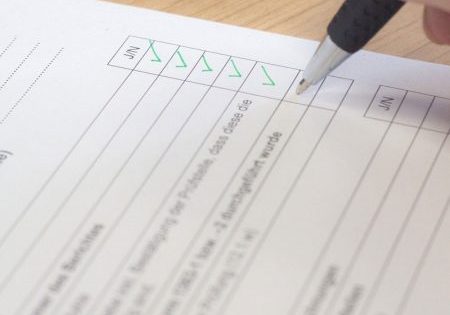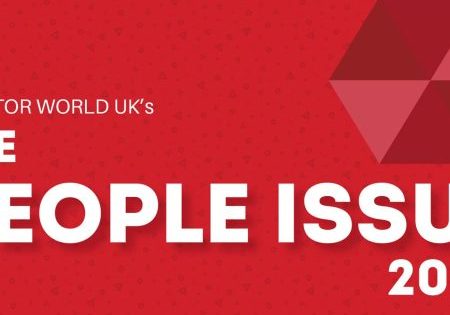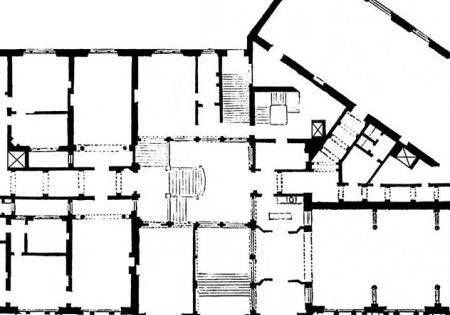Standards and Regulations
Sep 3, 2022

Your author takes a look at recent, and possibly future, changes in the U.K.
In a recent interview with LIFTjournal,[1] René Hermann, chairman of the Working Group CEN TC10 WG1, outlined CEN TC10’s work in relation to the European Commission’s Instruction to TC10 to redraft the EN 81 lift standards in order that these should properly align with the Essential Health and Safety Requirements (EHSRs) of the Machinery and Lifts Directives.
Hermann notes 800-plus EU comments for correction, with a significant focus upon previous failures to observe CEN regulations and procedures, which has given rise to several of the issues in question. Hermann notes alternative lifting gear, vertical sliding doors and machine brake design as new elements that will be considered in the revisions. The current “assumptions” section is to be consolidated as normative provisions or as delimitations in the “use” section. In addition, requirements are to be formulated in an objectively verifiable and measurable form with wide descriptive terms replaced with definitive measurable terms, and with a greater onus placed upon incorporating component standards drawn from other disciplines rather than in developing lift-specific provisions, and with provisions relating to the building structure contained in a separate appendix.
I also note a Point of View[2] published by the EFESME (European Federation for Elevator Small and Medium-sized Enterprises) relating to the revisions and CEN TC10, in which EFESME expressed concerns as to the influence exerted by “corporative interests” on TC10, which the EFESME considers biased and inappropriate and which should be eliminated to ensure fairness. In addition, concerns relating to accessibility provisions have also been raised by a number of European disability lobby groups.
That EFESME should feel a need to publicly raise such concerns is of concern in itself. Or maybe its comments are something of an overreaction? Whatever the case, it is important that participants in the CEN Committee should not only refrain from promoting corporative self-interest and/or exercising bias, but also that they be seen to do so.
It is sensible that the voice of the major manufacturers should be heard at standards committees. However, their presence and influence are based upon an assumption of independent expert technical input that is free of fear or favour. That their mere presence is open to being construed negatively in terms of a protection of vested interests rather than a promotion of best practice, state-of-the-art design and technology, and free market economics is demanding of ethical behaviour.
EFESME also recognises shortfalls against certain EHSRs of the Lifts Directive, including those of 1.6.1, 1.6.2, 4.4, 4.5, 6.1 and 6.2, and EHSR 1.1.2 of the Machinery Directive. And a need for revision of related standards, particularly EN 81-28, EN 81-70 and EN 81-76, in relation to the UN Convention on the Rights of Persons with Disabilities and the “Design for All” approach. The indication is of significant change to the provision of maintenance information such that a “Maintenance Masterplan” is envisaged, which involves greater transparency and availability of technical information including that relating to planned maintenance interventions, periodic checks, settings and adjustments, component wear and rescue operations over the whole life cycle of the installation and are to be available at the installation site.
EFESME’s concerns are reiterated by SBS (Small Business Standards)[3], which also expresses concerns as to possible “resistance within CEN.” The Commission has previously voiced concerns in relation to allegedly protracted timescales in CEN formulating Harmonised Standards and the adverse economic effect this has upon SMEs that are particularly reliant upon these as a means of attaining conformity as opposed to more costly product testing, which may be available to the larger players.[4] The Commission has also committed to addressing other concerns relating to the implementation of the Directive, including accessibility, market surveillance, improved coordination and clearer guidance.
I certainly advocate for a greater level of diversity and transparency in CEN Committees such that the voices of all interested parties may be heard. This supports principles of democracy and legitimacy in engineering and product design.

That the U.K. no longer has a proper seat at the table in the development of EN 81 and other CEN Standards is, in my view, lamentable, particularly in that the U.K. is, at least for the foreseeable future, committed to alignment with the EN Standards and that the EU is the largest lift market. EN 81 is the most widely used lift standard, providing the underlying base for standards in many other jurisdictions, and is, therefore, influential in world markets. The U.K., with its Common Law tradition and longstanding health and safety experience, brought a wider view to the CEN table, providing a greater diversity of approach and opinion.
Whilst one may look critically at the drafting of the Standards, one must also consider the limitations imposed by the desire to avoid prescriptive forms of drafting such as not to unduly restrict innovation. However, the direct link between the Harmonised Standards and regulatory compliance introduces a requirement for legal certainty, which dictates that drafting should be clear, concise and robust. The current system of interpretations is, in my view, overly cumbersome and, in the great majority of instances, unnecessary. Meaning and intent should, as the Commission has indicated, be inherent in the drafting and intent of the standards which should, of course, reflect the provisions and intent of the Regulation.
This drive for clarity and transparency is welcome. Too many lift contractors attempt to impart their own, in my view often dubious, interpretations to our Standards such as to subvert the underlying intent and meaning of these and, subsequently, the Regulation. The motives are often simple ignorance, a lack of understanding and even plain stupidity. On occasion, the arguments are driven by commercial gain (in effect, short-changing the consumer) with a disregard of the possible consequences. One need only consider the ongoing Grenfell Tower Inquiry for examples of such behaviours and the subsequent tragic consequences.
A recent London School of Economics (LSE) British Politics and Policy Blog,[5] which I viewed contemporaneously with Hermann’s interview, considers the economic and regulatory position relating to the UKCA Mark. The dilemma outlined by Dr. Renaud Foucart, senior lecturer in the Management School at Lancaster University, in the blog is that the UKCA Mark is costly and will most likely be ineffective; but the alternative of retaining the CE Mark, in the absence of a seat at the decision-making table, would amount to an acceptance of regulation in which the U.K. has no say, both of which are contrary to the Brexit rhetoric.
Foucart notes that the Brexit rhetoric included a reduced regulatory burden and the concept of “taking back control” and the inherent conflicts between these objectives and the UKCA Mark. Foucart also acknowledges the beneficially economic link between product standardisation and trade in terms of consumer confidence, market efficiency and product safety.
The U.K., with its Common Law tradition and longstanding health and safety experience, brought a wider view to the CEN table providing a greater diversity of approach and opinion.
Most of the lift equipment I encounter originates in the EU or European Free Trade Association (EFTA) countries. More often, the U.K. equipment I see is of good, and sometimes excellent, quality. The imposition of an additional and unnecessary cost burden in relation to the UKCA Mark appears economically counterproductive.
U.K. lift industry exports as an element of U.K., EU and world trade are economically insignificant. There is, therefore, little or no incentive for foreign markets to even consider, let alone recognise, an UKCA Mark. The requirement imposes an unjustifiable additional cost burden upon U.K. manufacturers, who will now need to comply with both EU, CE and U.K. UKCA Mark requirements. The problem is reportedly exacerbated by problems experienced in recruiting enough qualified regulatory personnel.
Overall, I welcome the proposed changes to the EN 81 Standards which, in my view, have been lacking in clarity, transparency and efficacy, such as to distort practice in the industry and reduce levels of safety and consumer confidence.
Indeed, considering our own SAFed LG1 provisions, some lift contractors are apt to decline to provide copies of BS8486 Test Sheets on an alleged basis that there is no specific regulatory requirement to do so, an approach which is both contentious and debatable. This does not sit well with SAFed LG1 2020, in which a significant reliance is placed upon the availability of records of original testing, both to verify that testing was undertaken and to record the form of tests undertaken, which dictate future provisions for in-service testing.
EN 81-20: 2020 and EN 81-50: 2020 are currently used to support the assumption of a conformity provision associated with a Harmonised Standard under 2014/33/EU, and after 27 July this year, EN 81-20: 2014 and EN 81-50: 2014 are obsolete and EN 81-20 and EN 81-50 are mandatory, along with EN 81-72: 2020 and EN 81-72: 2020 from 27 January 2023.
The indication is the next few years will bring much change in relation to standards and regulation. In addition to that required of CEN TC10 by the Commission, change in the U.K. is set to flow from the Grenfell Inquiry, some of which are already evident in the inclusion of a requirement for Evacuation Lifts in the London Plan and other provisions and legislation flowing from the Grenfell tragedy.
Questions are arising in relation to the qualification of lift contractors and lift engineers, and, in my view, these will eventually conclude in a licencing system similar to those applied in the gas and electricity sectors.
Questions are arising in relation to the qualification of lift contractors and lift engineers, and, in my view, these will eventually conclude in a licencing system similar to those applied in the gas and electricity sectors.
The U.K. Government has already begun to question the bureaucracy and cost burden associated with UKCA Marking and is reported to have considered abandoning this in favour of a recognition of the CE Mark as a cost-effective solution. Whilst this may reflect a common-sense approach in that the U.K. is, for the moment at least, intent upon retaining EU Standards, politically we cannot be said to have “taken back control,” particularly in that we no longer command a seat at the negotiating table.
At the time of writing, the indication is of a “simplification” of the UKCA Marking process. This simplification includes:
- application of the UKCA Mark to CE Marked products without further testing or consideration
- continuing recognition of CE Marked imports until the end of 2022
- a continuing recognition and acceptance of spare parts for CE Marked products already in the U.K.
- the acceptance of sticky-labels bearing the UKCA Mark or accompanying documents for goods
- and automatic recognition of certain construction products carrying the CE Mark, which may be UKCA Marked without reference to a U.K. Approved-Body.
It is confirmed that the simplification will apply to the lift sector. Whilst the simplification represents a pragmatic solution to meet the January 2023 deadline, it also has the potential to devalue the UKCA Mark. Indeed, a number of legal analysts talk of a “cautious welcome,” noting that businesses may have preferred a longer transition period.
Politically and economically, I question the point of it all. Indeed, what, if anything, has been achieved? Exports to the EU down by £20bn. Almost permanent queues of lorries at Dover. Disrupted airports and travel, etc.
As the Chinese Curse goes, “May you live in interesting times” — well, we have COVID-19, a war in the Ukraine, turmoil in world trade, disrupted supply chains, a cost-of-living crisis and even a dubious suggestion that the U.K. might revert to the old Imperial measurement system! Let’s hope for more ordinary, less interesting, times.
References
[1] Standardisation: “We have to return to simpler structures”, Hermann R. LIFTjournal, January 2022
[2] Lift SMEs point of view on EU revised “Standardisation Request” to CENTC 10, EFESME, February 2022
[3] SBS Lift SMEs Point of View on EU Revised “Standardisation Request” to CEN TC10, February 2022, www.sbs-sme.eu
[4] European Commission, Report from the Commission to the Council and the European Parliament, Implementation and functioning of the Directive 2014/33/EU of the European Parliament and of the Council of 26th February 2014 on the harmonisation of the laws of the member states relating to lifts and safety components for lifts, European Commission, Brussels, 22 September 2019
[5] CE or UKCA? The Cost of Taking Back Control of our Own Product Regulations, Dr. Renaud Foucart, LSE British Politics and Policy, LSE, 25 April 2022
Get more of Elevator World. Sign up for our free e-newsletter.









